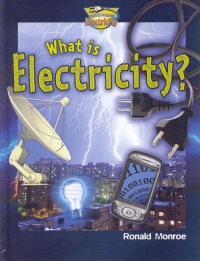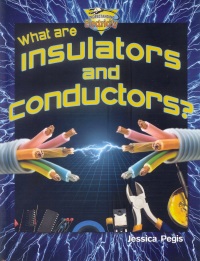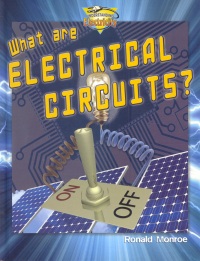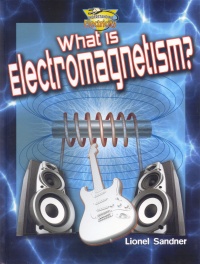| ________________
CM . . .
. Volume XIX Number 8. . . .October 26, 2012
excerpt:
The information that accompanies the four books in Crabtree’s “Understanding Electricity” series states a Grade 4 reading level and an interest level that ranges from Grade 3 through Grade 6. As important to teachers and librarians is the fact that the series was “designed to support the FOSS (Full Option Science System) Magnetism and Electricity module”. The FOSS teaching resource for Grade 4 was designed to help students understand magnetism, electromagnetism, static electricity, simple, series and parallel circuitry, and materials that are conductors and insulators of electricity Unlike the Foss module, Crabtree’s “Understanding Electricity” series attempts to explain electricity by telling readers about the atom, the positively charged neutron, negatively charged electron, and neutral neutron, and the loss of electrons from an atom that are gained by another atom giving the donor atom a positive charge and the recipient atom a negative charge. According to the authors, “[t]his buildup of extra electrons is electricity” (What is Electricity?, p. 6), “[a]n electrical current results when many electrons move in one direction” (What are Insulators and Conductors?, p. 4) and “[a]n electrical path is the route electrons travel in a circuit”” (What are Electrical Circuits?, p. 8). In Manitoba and jurisdictions with provincial science curricula built upon the Pan-Canadian Science Framework, the model of the atom is not introduced until Grade 9. This decision was intentional and based upon the cognitive level of learners and the ability of Grade 9 students to think about and begin to understand entities at the particulate level, or the realm of the atomic and subatomic. Sender, author of What is Electromagnetism?, attempts to stay away from statements at the non-observable level. He uses “electron” twice, once in a statement about current electricity and a second time in the book’s glossary. Although Sander may have better understood the philosophy behind the FOSS materials, one finds errors in his writing about magnetism. On page 6, he uses the word “stick” in association with magnetic attraction and fails to help readers understand the difference between forces that pull and adhesion. More egregious is the passage from page 8, included in the fourth excerpt above, where the push of like poles of two bar magnets and the pull of unlike poles of two bar magnets are presented and illustrated, and the rule in bold that follows states exactly the opposite. The “Try It for Yourself” activity on page 9 invites readers to demonstrate the magnetic field around a bar magnet using iron filings sprinkled on a plastic sheet covering the magnet. There is no safety warning about iron filings, and goggles are not included in the materials list. Iron filings are not to be used by Manitoba students in Grades 3 and 4. It is suggested that teachers substitute steel wool that has been cut in small filaments. Teachers and parents who have not made an electromagnet using an iron nail, battery, and insulated copper wire should also be aware of the heat that is generated in the nail if the “Try It for Yourself activity on page 21 is attempted. In spite of the concerns mentioned above, each of the four books in the “Understanding Electricity” series contains an abundance of information that learners with a curiosity about magnetism and electricity will find interesting. There is no doubt that the information presented will cause some readers to delve deeper into particular topics. Each topic is well-illustrated with stock photographic images, and the border and image underlay of each page is a photograph of the while bolts of current electricity. Interesting factual information is presented in yellow jagged-edge blurbs with the heading “Flash Fact” printed in yellow on a two-prong European plug, and there is also an attempt to include history of science with reference made to Gilbert, Tesla, Oersted, and others in What is Electricity? and What is Electromagnetism?. The books vary with the number of “Try It for Yourself” activities. The two extremes are What are Electrical Circuits? with five and What are Insulators and Conductors? with two. All four books begin on page 3 with a table of contents and come to a close with a full page “Glossary” and a full page “Learning More” that lists relevant Crabtree publications and three or five relevant websites. The final entry in each book is an “Index” on page 32. Recommended with reservations. Barbara McMillan is a teacher educator and a professor of science education in the Faculty of Education, the University of Manitoba, Winnipeg, MB.
To comment
on this title or this review, send mail to cm@umanitoba.ca.
Copyright © the Manitoba Library Association. Reproduction for personal
use is permitted only if this copyright notice is maintained. Any
other reproduction is prohibited without permission.
NEXT REVIEW |
TABLE OF CONTENTS FOR THIS ISSUE
- October 26, 2012.
AUTHORS |
TITLES |
MEDIA REVIEWS |
PROFILES |
BACK ISSUES |
SEARCH |
CMARCHIVE |
HOME |



